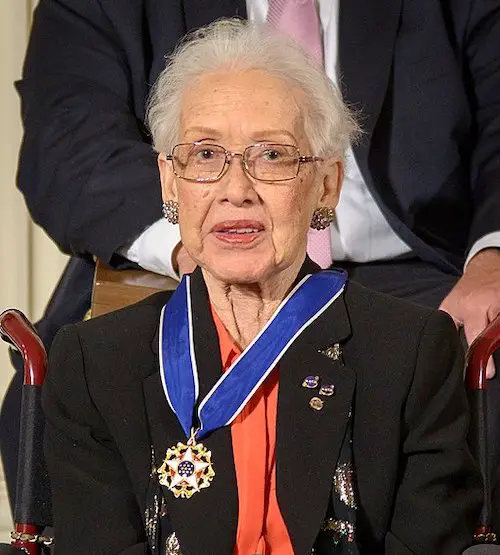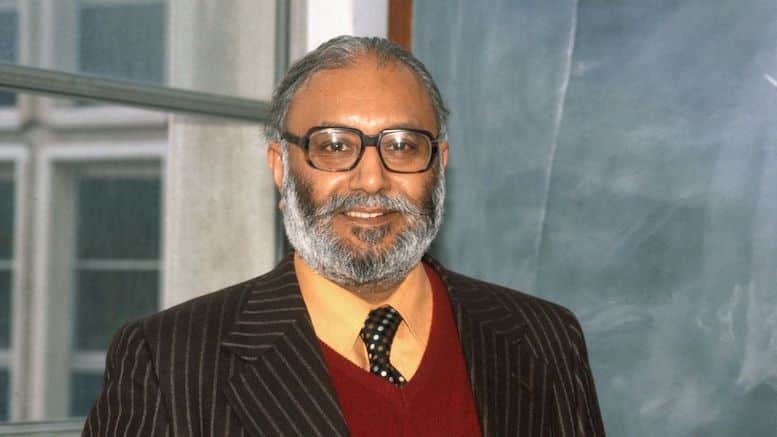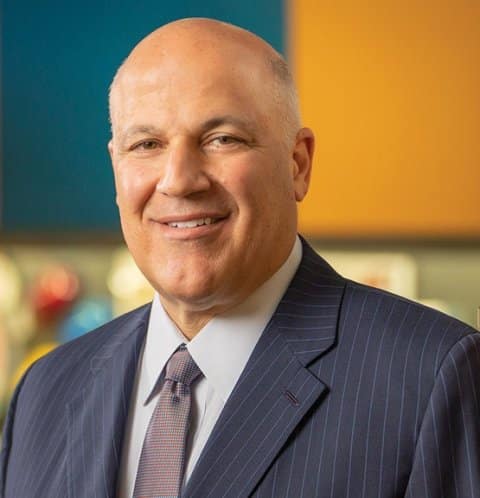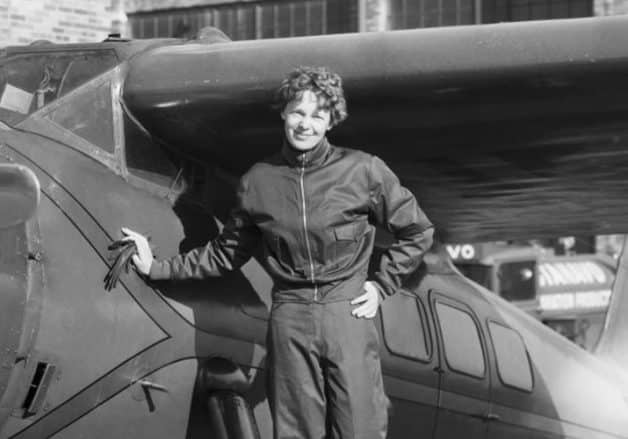Engineering plays a pivotal role in shaping the world we live in today. From exploring the furthest reaches of our solar system to improving our daily lives through innovation, engineers continue to inspire us. Here, we take a look at seven remarkable stories of individuals who have made significant contributions to the field of engineering.
The 7 remarkable stories of individuals who have made significant contributions to the field of engineering.
Katherine Johnson: Guiding Astronauts to the Moon

In the world of space exploration, few names resonate as strongly as Katherine Johnson. A brilliant mathematician who worked for NASA, Johnson’s work had a profound impact on the success of America’s space program, particularly in the historic Apollo missions that took astronauts to the Moon. Her story is not just about numbers and calculations; it’s a tale of breaking barriers, pioneering in her field, and inspiring others to reach for the stars.
Early Life and Education
Born in 1918, Katherine Johnson’s exceptional talents in mathematics were evident from a young age. Growing up in a time when educational opportunities were limited for African Americans, she faced numerous challenges. However, Johnson’s determination led her to graduate from high school at the age of 14 and later earn a degree in mathematics from West Virginia State College.
Career at NASA
Johnson began her career as a school teacher but soon found her way to NASA’s predecessor, the National Advisory Committee for Aeronautics (NACA), in 1953. There, she worked as a human computer, performing complex calculations that would help inform the United States’ burgeoning space program.
Her mathematical brilliance quickly made her an invaluable asset to NASA. When the space agency was established in 1958, Johnson was among the small group of African American women who were transferred to the new organization.
Johnson’s intricate calculations were instrumental in launching John Glenn into orbit during the Mercury-Atlas 6 mission in 1962. Glenn himself asked for Johnson to double-check the computer’s numbers, a testament to her accuracy and reputation.
Apollo Missions and the Moon Landing
Perhaps the most iconic of Johnson’s contributions came during the Apollo missions. Her work was vital in guiding the Apollo 11 mission in 1969, which successfully landed the first humans on the Moon. Johnson’s calculations helped ensure that the lunar module would sync with the command module in orbit around the Moon, a critical step in the mission’s success.
Breaking Barriers
Beyond her technical achievements, Katherine Johnson’s story is remarkable for the barriers she broke as an African American woman in a predominantly male and white field. Working in an era when segregation was still prevalent, she carved out a space for herself and other minority women in the world of science and technology.
Legacy and Recognition
Johnson’s story has inspired many, not only for her contributions to space exploration but also for her role in breaking down societal barriers. Her life and work were brought to a wider audience through the book and subsequent film “Hidden Figures,” which highlighted the essential work of African American women at NASA during the space race.
In recognition of her achievements, Johnson received numerous awards, including the Presidential Medal of Freedom in 2015. She passed away in 2020, leaving behind a legacy that continues to inspire people of all backgrounds to pursue their dreams, regardless of the obstacles they face.
Tracy Drain: Pioneering Solar-Powered Space Travel

In the realms of space exploration and engineering, Tracy Drain stands out as a beacon of innovation and inspiration. Her work at NASA’s Jet Propulsion Laboratory, especially on the Juno mission, is pushing the boundaries of technology and inspiring future generations. Here, we explore Drain’s significant contributions to space exploration and her role as a mentor and role model for women and girls interested in engineering.
Early Life and Education
Tracy Drain’s passion for space and engineering began in her childhood. Her interest in space was sparked by the science fiction she read and the television shows she watched. Drain pursued her passion by studying mechanical engineering at the University of Kentucky, where she earned her Bachelor’s degree. Later, she obtained a Master’s degree in Mechanical Engineering from the Georgia Institute of Technology.
A Flourishing Career at NASA
Drain’s dedication to space exploration led her to join NASA’s Jet Propulsion Laboratory (JPL) in 2000. Since then, she has been a part of several groundbreaking missions, contributing to our understanding of the cosmos.
The Juno Mission: A Leap in Space Exploration
Among her many achievements, Drain’s work on the Juno mission stands out. Launched in 2011, Juno is the first solar-powered spacecraft designed to travel to Jupiter. The mission’s objective is to study Jupiter’s magnetic and gravitational fields, as well as its deep atmosphere, to uncover the secrets of the gas giant’s formation and evolution.
Drain’s expertise in flight systems engineering played a pivotal role in the design and success of the mission. Solar power in deep space, especially as far from the Sun as Jupiter, presented enormous challenges. Drain and her team’s innovative solutions enabled Juno to accomplish its objectives using solar energy, a more sustainable alternative to conventional power sources used in space travel.
An Advocate for Women in Engineering
Beyond her technical achievements, Tracy Drain is an ardent advocate for women in the field of engineering. Recognizing the gender gap in STEM (Science, Technology, Engineering, Mathematics) fields, she actively encourages girls and young women to pursue careers in engineering and space sciences.
Her own success stands as evidence that gender should not be a barrier to achieving greatness in these fields. Through public speaking, mentorship, and engagement with educational programs, Drain is playing an essential role in shaping a more inclusive and diverse future for the engineering profession.
Legacy and Impact
Tracy Drain’s work on Juno and other missions continues to expand our understanding of the universe. More than that, her passion and advocacy are creating pathways for more girls and women to explore opportunities in engineering.
Her story sends a strong message to the next generation: that with hard work, dedication, and a passion for discovery, anyone, regardless of gender, can contribute to the advancement of science and technology.
Derby the Dog: Overcoming Disability Through Engineering

Derby the Dog’s story is not only an inspiring tale of overcoming physical limitations but also a shining example of the compassionate use of engineering to enhance lives. Born with a disability that hindered his ability to walk and run, Derby found hope in the hands of a talented team of engineers at the University of California, Davis. Their ingenuity and compassion led to the creation of a prosthetic leg that allowed Derby to live a life full of joy and mobility.
A Challenging Start
Derby’s early life was marked by struggle. Born with deformed front legs, he faced significant challenges in performing everyday activities that most dogs take for granted. His disability didn’t just limit his mobility; it also made finding a forever home more difficult.
A Unique Engineering Solution
Enter the team of engineers at the University of California, Davis. Recognizing Derby’s unique needs, they embarked on a project to create customized prosthetic legs that would allow him to walk and run like other dogs.
This was no simple task. The team had to consider Derby’s specific anatomy, his weight, the way he moved, and how to make the prosthetics comfortable for everyday wear. Through a process of careful analysis, design, and testing, the engineers crafted a pair of prosthetic legs that were a perfect fit for Derby.
A New Lease on Life
With his new prosthetic legs, Derby’s life transformed. The once-hindered pup was now able to run, play, and explore the world around him with ease. Videos of Derby joyfully running have touched hearts worldwide, turning him into a symbol of resilience and the transformative power of technology.
The joy and freedom that Derby experienced were not only a testament to human ingenuity but also a heartwarming example of how engineering can have a profound impact on individual lives.
Impact Beyond Derby
Derby’s story has had a ripple effect, inspiring both engineers and animal lovers alike. The success of his prosthetics has led to increased interest in developing similar solutions for other animals with disabilities. It’s a reminder that engineering isn’t just about building bridges or designing machinery; it’s also about creating innovative solutions that can bring joy, mobility, and quality of life to those who need it most.
The work done for Derby has also become a teaching tool, encouraging students in STEM fields to think creatively and compassionately about how their skills can be applied to solve real-world problems.
Abdul Salam: Nobel Laureate and Father of Nuclear Physics in Pakistan

The life and achievements of Abdul Salam, the Pakistani physicist who won the Nobel Prize in Physics in 1979, stand as a shining example of the potential for extraordinary success regardless of one’s circumstances. Known as the father of nuclear physics in Pakistan, Salam’s legacy continues to inspire individuals not only in his home country but also in developing nations around the world.
Early Life and Education
Born in 1926 in Jhang, a small town in what is now Pakistan, Abdul Salam’s talent for mathematics and physics was apparent from a young age. Despite limited resources and educational opportunities, he excelled in his studies, earning a scholarship to attend Government College University in Lahore.
Salam’s academic journey did not stop there. He earned a scholarship to study at the University of Cambridge, where he obtained his PhD in theoretical physics. His early life was marked by determination and an insatiable curiosity about the natural world.
Scientific Achievements
Salam’s contributions to the field of physics were groundbreaking. He played a key role in the development of electroweak theory, which explains the relationship between the electromagnetic force and the weak nuclear force. This work laid the groundwork for the Standard Model of particle physics and earned Salam the Nobel Prize in Physics in 1979, along with Sheldon Glashow and Steven Weinberg.
In addition to his work on electroweak theory, Salam made significant contributions to quantum field theory, symmetry, and other areas of theoretical physics. His research continues to influence contemporary physics.
Advocate for Science in Developing Countries
Salam’s passion for science extended beyond his own research. He was a tireless advocate for the promotion of science and technology in developing countries. Recognizing the potential in young scientists from underprivileged backgrounds, Salam founded the International Centre for Theoretical Physics (ICTP) in Trieste, Italy. This institution offers training and resources to scientists from developing nations, fostering collaboration and providing opportunities for growth and development.
Legacy and Impact
Abdul Salam’s legacy is multifaceted. As a scientist, his research revolutionized our understanding of the fundamental forces of nature. As an educator and advocate, he opened doors for countless young scientists who, like him, faced barriers due to their circumstances.
His story serves as an enduring reminder that talent and potential are not confined by geography or socioeconomic status. It also underscores the importance of education, mentorship, and international collaboration in nurturing scientific talent and innovation.
Salam’s life continues to inspire individuals in Pakistan and other developing nations to pursue careers in science and engineering. He has shown that with perseverance, intelligence, and a commitment to excellence, it is possible to overcome obstacles and achieve greatness.
Sherwin Williams: Leading a Fortune 500 Company

The journey of Sherwin Williams, an African American engineer who became the first African American CEO of a Fortune 500 company, serves as a compelling narrative of overcoming societal barriers and achieving remarkable success in the corporate world. His leadership at the helm of the Sherwin-Williams Company not only broke significant racial barriers but also stands as a beacon of inspiration for African Americans and other minorities aspiring to leadership roles in the business sector.
Early Life and Education
(Note: The provided text does not include specific details about Sherwin Williams’ early life and education, so the following is a generalized description.)
Like many individuals who break glass ceilings, Sherwin Williams’ journey to the top was likely filled with challenges and opportunities. His education and early career as an engineer would have required determination, intelligence, and the ability to overcome potential biases and stereotypes associated with his race.
Career at the Sherwin-Williams Company
The Sherwin-Williams Company, a global leader in the manufacture, development, and sale of coatings and related products, became the stage for Williams’ historic achievement. His ascent to the CEO position marked a significant milestone in corporate America.
Williams’ leadership would have entailed steering the company through complex market dynamics, technological innovations, and evolving customer needs. His engineering background likely provided a unique perspective, allowing him to approach problems with analytical rigor and innovative thinking.
Breaking Barriers
Sherwin Williams’ appointment as CEO is not just a personal accomplishment; it’s a historic moment that challenges existing stereotypes and biases in the corporate world. In an environment where African Americans and other minorities are often underrepresented in leadership roles, his success sends a powerful message.
It demonstrates that talent and leadership ability are not confined by race or background, and it provides a visible and inspiring example for others who may face similar barriers.
Impact and Inspiration
The significance of Williams’ achievement extends far beyond the boardroom of the Sherwin-Williams Company. His story resonates with individuals across different fields and backgrounds who aspire to leadership roles but may feel hindered by societal biases.
By breaking through a significant barrier, Williams has opened doors and set an example that others can follow. His success is a reminder that with determination, skill, and a refusal to be defined by stereotypes, great heights can be reached.
Amelia Earhart: A Pioneering Spirit in Aviation

Amelia Earhart’s name is synonymous with courage, determination, and pioneering spirit. As the first woman to fly solo across the Atlantic Ocean, Earhart’s contributions to aviation and her groundbreaking achievements have left an indelible mark. Her life and legacy continue to inspire women and girls to pursue careers in aviation, engineering, and other fields traditionally dominated by men.
Early Life and Passion for Flight
Born on July 24, 1897, in Atchison, Kansas, Earhart’s fascination with flight began at a young age. Her adventurous spirit was evident early on, and she was drawn to the excitement and challenge of aviation.
In 1920, Earhart attended an airshow in Long Beach, California, where she took her first airplane ride. This experience ignited a passion that would shape the rest of her life. By 1921, she had saved enough money to purchase her first aircraft and began taking flying lessons.
Breaking Records and Gender Barriers
Earhart’s flying career was marked by a series of firsts and record-breaking achievements. In 1928, she became the first woman to fly across the Atlantic Ocean as a passenger. But Earhart was not content to be merely a passenger; she wanted to pilot the aircraft herself.
In 1932, she achieved her dream, becoming the first woman to fly solo across the Atlantic Ocean. Her daring flight from Newfoundland to Ireland took nearly 15 hours and was fraught with challenges, including mechanical issues and challenging weather conditions. Nevertheless, Earhart’s skill and determination prevailed.
She continued to break records, including becoming the first woman to fly solo nonstop coast to coast across the United States and setting a women’s altitude record.
Advocate for Women in Aviation
Earhart’s impact extended beyond her personal achievements. She was a strong advocate for women’s rights and played a vital role in encouraging women to enter the field of aviation.
She helped found the Ninety-Nines, an organization dedicated to supporting women pilots, and used her fame to promote aviation opportunities for women. Earhart’s leadership and advocacy helped pave the way for future generations of women in aviation and engineering.
Legacy and Inspiration
Amelia Earhart’s disappearance during her attempt to fly around the world in 1937 has only added to her mystique and enduring legacy. Her life’s work remains a powerful testament to what women can achieve when they pursue their dreams with determination and courage.
Earhart’s pioneering spirit continues to inspire women and girls to break gender barriers in aviation, engineering, and other STEM fields. Her achievements serve as a reminder that gender should not be a barrier to pursuing one’s passions and that with perseverance and bravery, the sky is indeed the limit.
James Dyson: Inventor Changing Everyday Lives

James Dyson, a name synonymous with innovation and creativity, has had a lasting impact on the world of household appliances and engineering. His invention of the bagless vacuum cleaner not only transformed the way we clean our homes but also symbolizes the boundless potential of human ingenuity. Dyson’s story is a vivid example of how one person’s curiosity, perseverance, and innovative thinking can change everyday lives and inspire others to pursue their entrepreneurial dreams.
Early Life and Career
Born on May 2, 1947, in Cromer, Norfolk, England, Dyson showed a flair for design and problem-solving from a young age. He studied at the Royal College of Art in London, where he began to explore and understand the relationship between form and function.
His initial inventions were related to industrial design, but it was a personal annoyance that led to his most famous creation. Frustrated with the diminishing performance of traditional vacuum cleaners, Dyson set out to solve the problem.
The Bagless Vacuum Cleaner
Dyson’s quest for a better vacuum cleaner led to a revolutionary idea: the cyclonic separation system. This technology uses centrifugal force to remove dust and debris from the air without the need for a bag or filter that clogs and reduces suction.
The path to success was not easy. Dyson faced skepticism, rejection, and financial challenges, but his belief in the idea never wavered. After more than 5,000 prototypes and 15 years of development, the first Dyson bagless vacuum cleaner hit the market in 1993.
It quickly became a sensation, appreciated for its efficiency, design, and the innovative technology that powered it.
Building the Dyson Company
Dyson’s invention was just the beginning. He founded the Dyson company, which has grown to become one of the world’s leading manufacturers of vacuum cleaners, hand dryers, bladeless fans, and more.
Under his leadership, the company has continued to push the boundaries of innovation, producing products that combine aesthetic appeal with cutting-edge technology. Dyson’s commitment to research, development, and design excellence has kept the company at the forefront of its industry.
Impact and Inspiration
James Dyson’s journey from an idea to a global business empire is an inspiring tale for inventors, entrepreneurs, and anyone who believes in the power of innovation. His story illustrates that creativity, determination, and a willingness to challenge conventional wisdom can lead to extraordinary success.
His influence reaches beyond the products he has created. Through the James Dyson Foundation, he encourages young people to pursue engineering and design, fostering the next generation of innovators.
Conclusion
These seven stories are merely a glimpse into the vast world of engineering and the people who shape it. Engineers contribute to our lives in countless ways, from enabling space exploration to creating solutions for everyday challenges. Their stories are a testament to human creativity, perseverance, and the ability to overcome obstacles. Whether we’re looking to the stars or finding new ways to enhance our daily lives, these inspiring tales remind us that anything is possible with dedication, hard work, and a belief in oneself.
